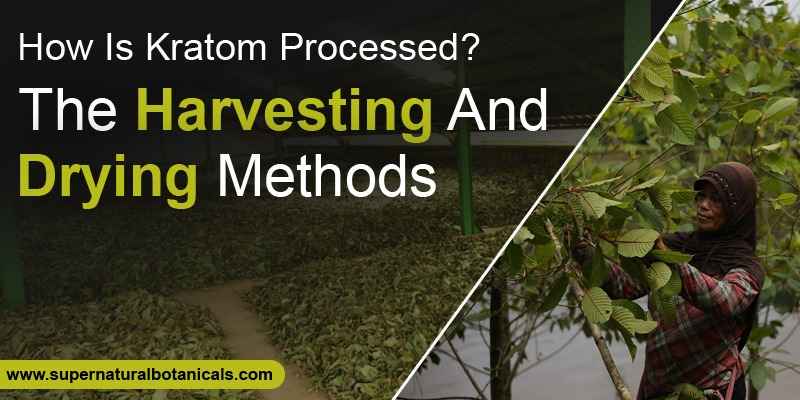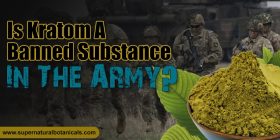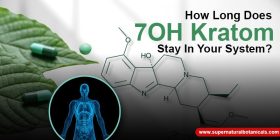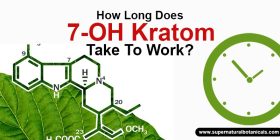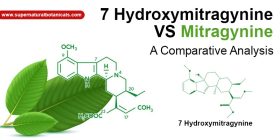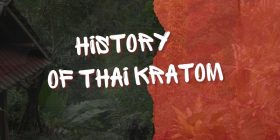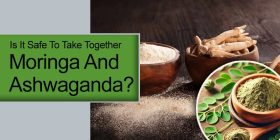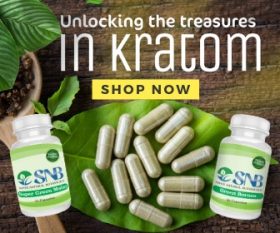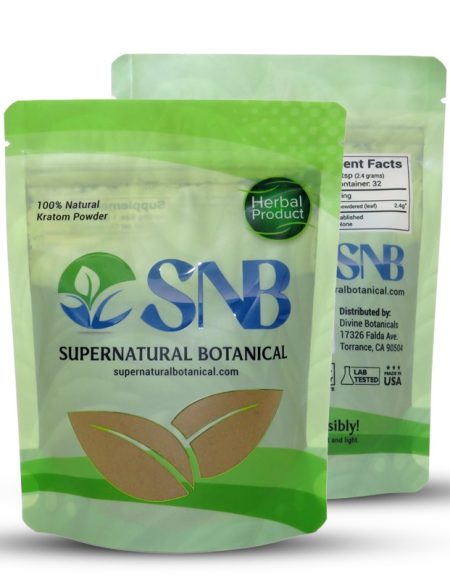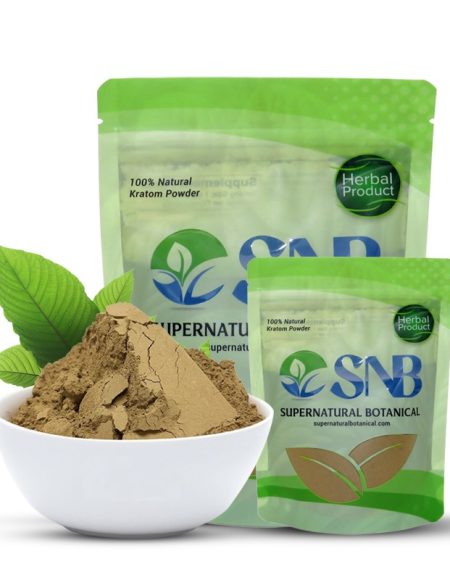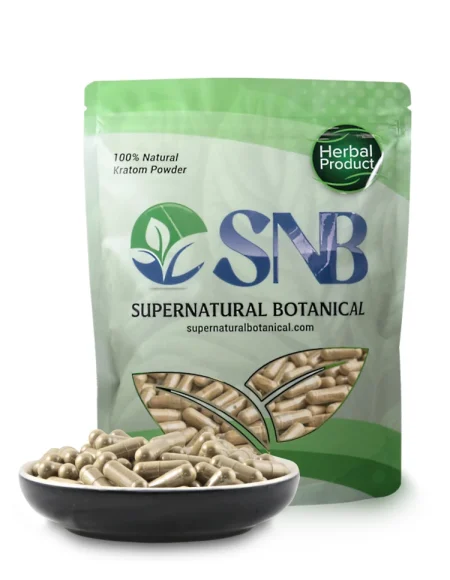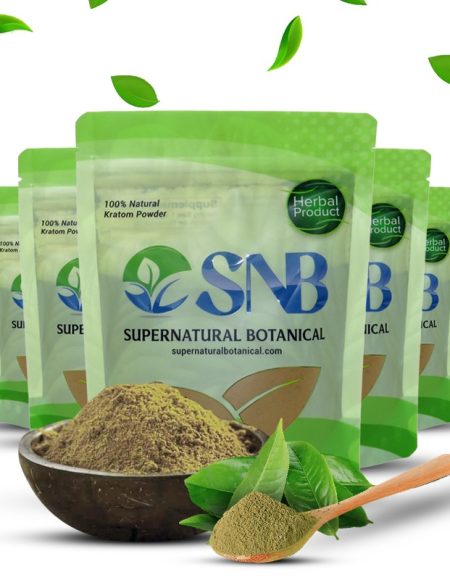Kratom is an ancient botanical, and has been in use for centuries. While people in the past plucked leaves and chewed them fresh, users observed over time that drying Kratom leaves was an essential step to get the most out of the botanical. Moreover, some Kratom types are characterized by the way the leaves are dried.
Harvesting Kratom leaves at the right time is also an integral part using this herb. As the Kratom tree grows, the amount of alkaloids in leaves also grows until it reaches its prime and has the maximum amount of alkaloids, terpenes, flavonoids and trace elements. Here is all you need to know about How Is Kratom Processed? The harvest and drying methods of Kratom leaves.
Table of Contents
Kratom Plantations In The Heart Of Asia
Southeast Asian countries such as Thailand, Malaysia, Papua New Guinea, Indonesia and adjacent islands are home to Kratom trees. This species is found only in this region. Kratom trees grow in forests in the region, but since the demand for Kratom has increased over the years, farmers have started cultivating this tree in farms. The various kinds of trees are grown in controlled conditions to produce rich, potent and effective Mitragyna Speciosa trees.
The various varieties of Kratom get their unique alkaloid composition from the specific region. For example, the humidity in the Thai forests is greater than in Indonesia, which differentiates between the Kratom growing in these two regions. The amounts of alkaloids and other components vary, which makes these plants impact users in diverse ways.
Some species that are more in demand have to be harvested in a larger quantity so every user can get their share. Maeng Da is a supreme strain that is loved by all, and that is why farmers grow it in controlled conditions with set temperature, and humidity to produce this strain with all its goodness.
Kratom farmers in Southeast Asia are special because they can identify when the Mitragyna leaves are mature and can be harvested. If the farmers pluck the leaves from young plants, their alkaloid profile will not be as strong, and it will not bear the qualities of that particular strain at maturity. For example, if Bali Kratom leaves are picked from a small tree, the leaves will have lesser alkaloids than a fully-grown Kratom plant.
Step-by-step Process Of How Is Kratom Processed? Harvesting Kratom
Harvesting Kratom leaves might seem like a small task but it requires a certain level of expertise. Kratom farmers have to know when the leaf is ripe and when it has a good amount of moisture. The ripe leaves may wilt and become yellow within a few days if they are not picked at the right time. This quick ripening is why farmers have to be able to tell when the leaves should be picked.
The harvest and drying methods are diverse and complicated, and it will not be wrong to say that every method brings out a new quality in Kratom. Some farmers rely on century-old harvest and drying methods while some try innovative ways to prepare the Kratom leaves for manufacturing processes. Some farmers use young leaves because they cannot wait for them to mature. On the contrary, some growers take time to harvest so that the leaves ripen and have a higher concentration of alkaloids. Rich, juicy and mature leaves are the raw material that ensure the best Kratom products. The Kratom harvesting map is simple, yet it leads us through various steps that are essential to the final product. A Kratom harvesting video can help you understand the process better, however, if you are thinking of buying from any shop in America, find out their particular methods too.
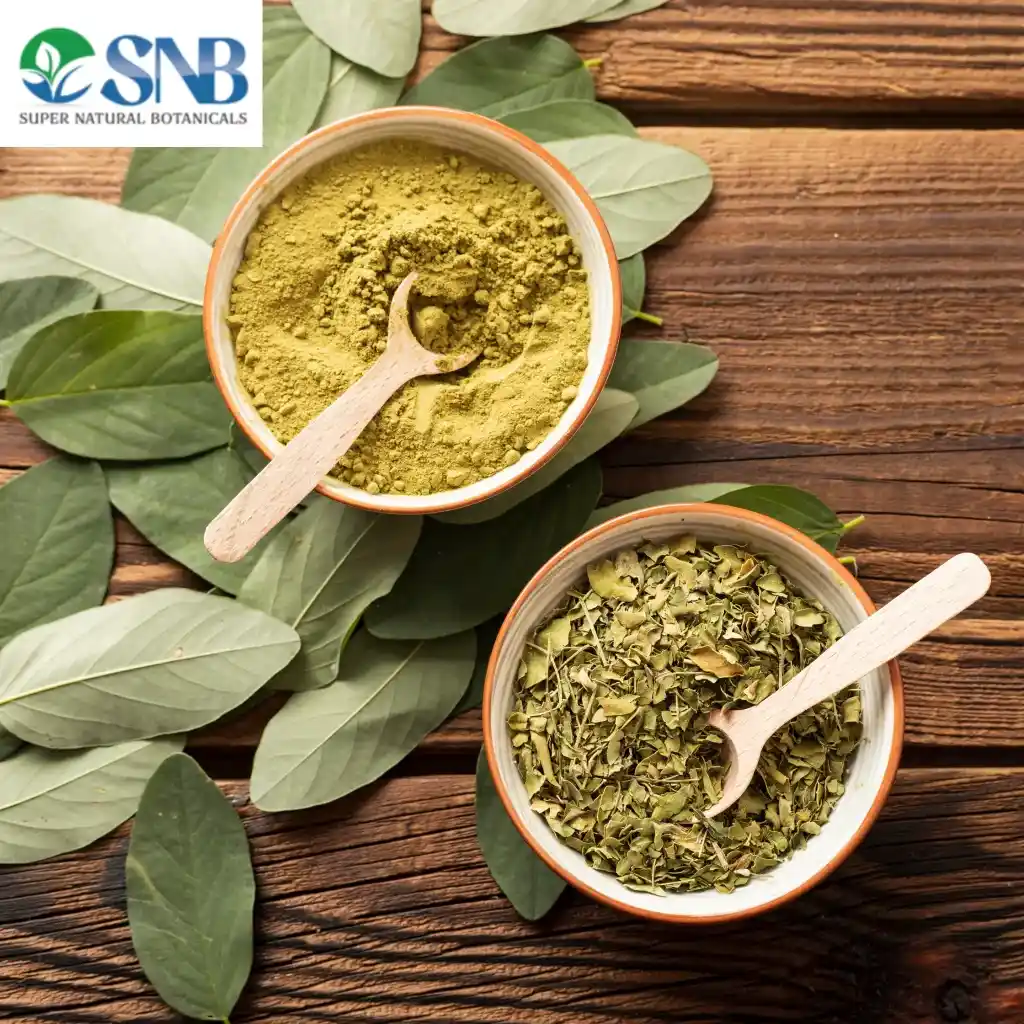

Harvesting Kratom Plants At Home
Harvesting homegrown Kratom can be a challenge for newbies, or people who are first-time harvesters. Kratom plant harvesting should be done at the time when the leaves are mature. If the leaf is light in color, and looks shiny, it is young. However, when you notice that the color of Kratom leaves has darkened, they can pluck it and use it for tea, or any other method of consumption. Harvesting Kratom can be a refreshing activity as you will enjoy the process of collecting leaves from a plant that you grew at home.
The Various Drying Methods
Kratom is used to make various products such as powder, resin, liquids, and wax. After Kratom plant harvesting, the Mitragyna leaves are often dried and then crushed or ground to create the different items. However, there have been different methods such as fermentation and extraction of alkaloids to create concentrated forms of this herb. Many years ago, farmers used to put fresh leaves in a plastic bag to start the process of fermentation. However, this method can cause several bacteria to multiply and the presence of mold, and fungus can cause the Mitragyna to become unsafe for use.
Some farmers dry the leaves in direct sunlight to make them crisp, yellow and absolutely dry. This method is used to create Yellow Kratom varieties, which contain Vitamin D from the sun and have a sweeter taste due to the chemical reaction with heat from the sun. Some of the alkaloids become inactive or change their chemical construction, which means the impact of this strain changes.
The most common way of drying leaves is by spreading them on a vast area with cotton sheets on top. This method ensures that the leaves dry without any dust deposition and insect contamination. Moreover, the alkaloids in the leaves do not change their natural state, which keeps the leaves potent. This method of dying leaves is most popular as it gives users the most natural and closest experience in terms of alkaloid impact. When the leaves are covered, they are not exposed to sunlight. Since light and heat from the sun can cause the chemical composition to change, the leaves in cotton sheets are unchanged. There will be no dust or insects on the leaves since they are covered, which means that harvesters will not have to wash them before grinding them or crushing them.
The American Kratom Association’s Requirements
The American Kratom Association (AKA) regulates the production and distribution of Kratom in America. Since the FDA does not allow use of the natural botanical, the AKA came into being to ensure that consumers get the best out of Kratom.
The Kratom plant harvesting and drying methods laid down by the AKA as standard, are made to ensure that the Kratom leaves are free from contamination and the alkaloids are not reduced or changed due to the chemical reactions caused by heat from the sun.
In the Policy Brief issued by the AKA, the association says that, “The AKA strongly endorses consumer protections that require kratom manufacturers to follow current CGMP regulations; restrict any alteration of the proportion of alkaloids found in the natural plant; not allow any dangerous substance to be added to a kratom product that would be injurious to a consumer; require compliant labeling to inform consumers of the content; impose age restrictions; and not permit any therapeutic marketing claims that are not supported with approved clinical trial evidence.´” (Policy Brief AKA, Maryland General Assembly).
According to this brief, the AKA does not allow any online shop and manufacturer to use Kratom leaves that are dusty, or may be contaminated with insects. Moreover, the AKA stresses upon the GMP packaging for every product so that the consumers get safe, and clean items to use.
Click Here To Read Article On What Is the Kratom Consumer Protection Act (KCPA)?
A Word of Caution For All Consumers
Some farmers do not dry the leaves at all and grind them to produce a semi-solid paste-like substance, which is then brewed and condensed to make extracts. These extracts might not look different from the 100% natural and concentrated extracts but the side effects may be problematic. The extracts made without drying the leaves are contaminated mostly, and do not have a good effect. We always recommend users to check the lab-tested products so that the final product that you use is declared safe. The origin, manufacturing steps, lab-testing and packaging must be checked before you decide to buy any product.
How Top Shops Must Dry and Harvest Kratom Leaves
Supernatural Botanical wants consumers to experience Kratom in its full colors, and so we only rely on mature harvest. Moreover, extra care goes into the drying process while we ensure that there is no dust, moisture or insect contamination. The leaves remain on the trees till the alkaloids prime, and then, a meticulous drying process follows. Harvesting and processing Kratom leaves is an intricate matter for us as we care for our consumers, and we follow the method with perfection.
Click Here To Read This Article On The Editorial Process at Supernatural Botanical
Young Leaves Are Not Our Style
We understand that harvesters pick leaves early because the demand for Kratom is increasing and they cannot wait for the new stock to mature. However, the alkaloid concentration in young Kratom leaves is low and will not give the desired results. Kratom leaves take up to eight months to grow fully and wild trees can take as long as a year to grow leaves to their full age. We cannot reduce the quality of our products only to produce more Kratom items in a short time.
The Drying Process Has To Be Special
The drying process used by our partner farmers includes laying the leaves on the surface in a shaded area. Thin cotton sheets cover the leaves to keep them free from dust and insects. The aerated area and heat from the sun helps dry the leaves, which are then crushed to release the alkaloids before the manufacturing process begins.
Supernatural Botanical ensures that the leaves are fully dry after leaving them in an open area so that there is no moisture left. The drying area is free from birds, and humans so there is no chance of contamination. After fermenting, we use dried leaves instead of leaving wet leaves in bags to allow fungi and bacteria to grow. At Supernatural Botanical, quality and precision of the manufacturing process is essential, and we can never compromise that.
The Partner Farmers For SNB
We source fresh, robust and organic Kratom from the fields of Southeast Asia where expert farmers harvest the leaves. The cultivation of some strains is fully supervised while many other strains come from all-natural forests. Our partner farmers maintain the quality by following our priorities of consumer satisfaction. Supernatural Botanical has numerous partner farmers in Thailand, Indonesia, Malaysia and other countries. Therefore, all the products on our shelves include exotic strains such as Hulu Kapuas, and Riau, which grow on river banks. Similarly, the Indo strain that grows on the slopes of hills in the Bali Island is also 100% nature-grown without any human intervention. Maeng Da and Bali Kratom, which is more in demand, is grown and maintained on farms where conditions like temperature, humidity and irrigation are controlled to imitate the forest climate.
SNB’s Kratom Harvesting and Drying Techniques
Supernatural Botanicals offers unique products as the raw materials are unique and 100% natural. If you are looking for an extract or powder, you will find that these items from our shop are more potent and impactful than others. The reason for this is that we do not compromise on quality. Our partner farmers pick the best leaves, and dry them properly. The crushed leaves reach the manufacturing unit where state-of-the-art machinery and industrial grinders turn these crushed leaves to a fine powder. All the items are laboratory-tested to rule out any chance of contamination while profiling the various alkaloids and their amounts.
Moreover, the best GMP-recommended packaging is used to keep these products fresh and potent for you! We can assure our customers that they will find the best quality at the best price. Moreover, there are discount deals and a lot of benefits such as coupon codes, loyalty points and a lenient return policy to help you find your Kratom strain and enjoy the Mitragyna journey. We pack a lot of care with the most robust Kratom items and that is why our customers love to use these items and always return for more.
References
MGA
https://mgaleg.maryland.gov/cmte_testimony/2020/jud/1574_02042020_101619-42.pdf


Evelyn is an avid enthusiast of kratom. She is heavenly driven by a passion for alternative remedies and natural wellness solutions. With a background in pharmacology, she dedicates herself to staying at the forefront of research and developments in the field.
As a writer and content creator, Evelyn produces informative articles, blog posts, and videos, covering a wide range of topics that includes benefits, risks, usage tips, and the latest research findings. She aims to empower individuals to make well informed decisions about their health and wellness journey through her work, and promote safe and legal access to Kratom.
Learn more about our editorial process over here.


